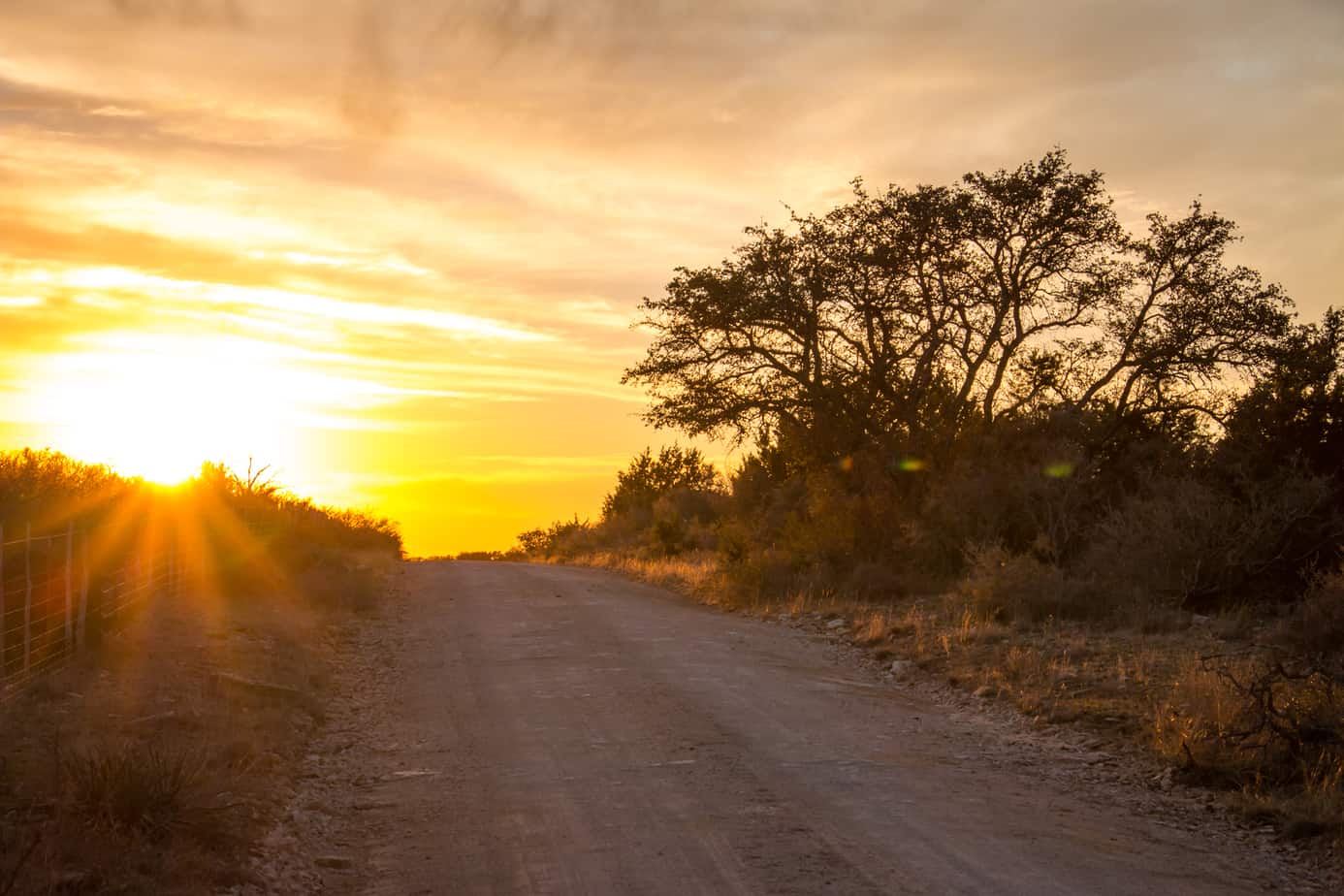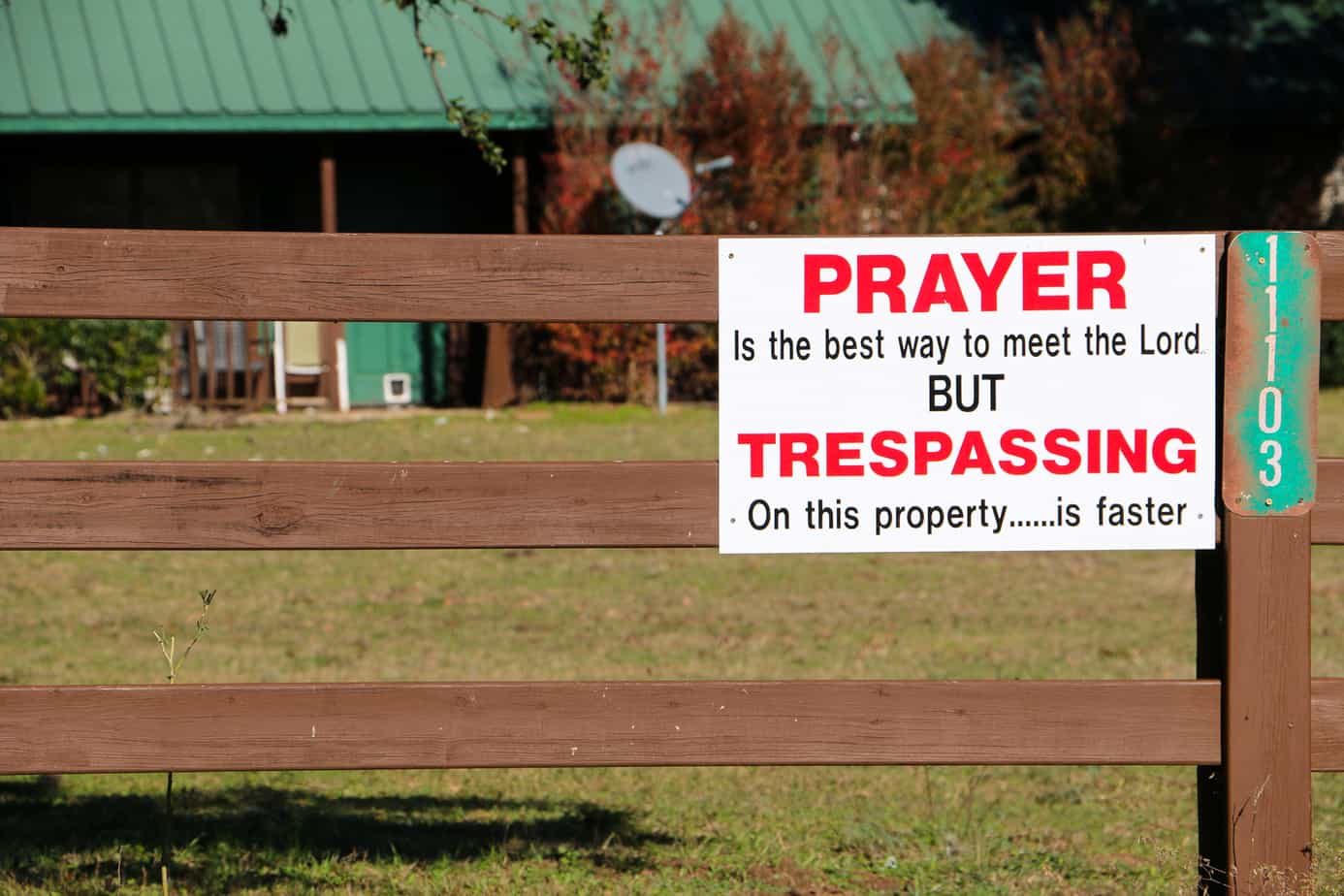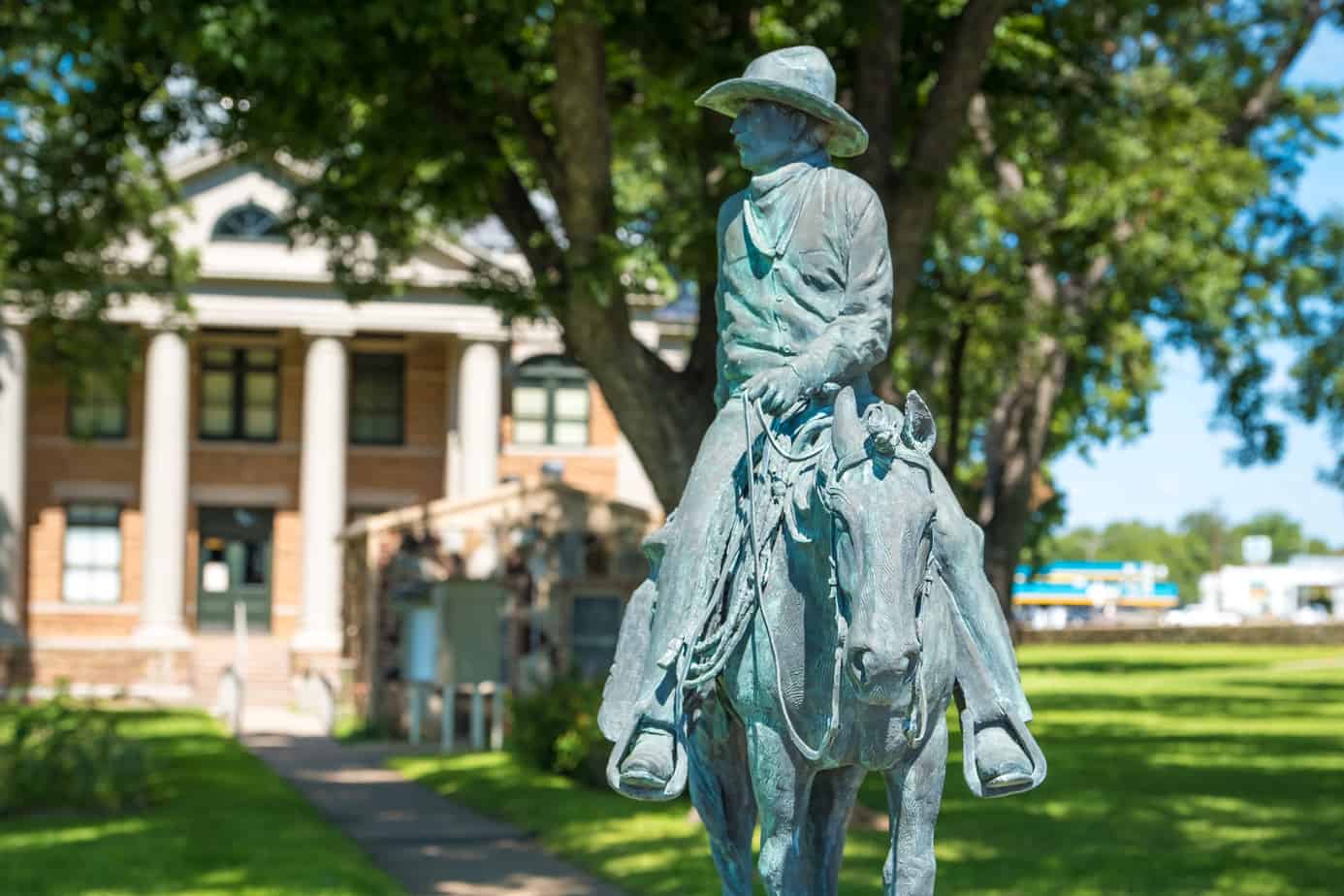Editor’s Note: This article was originally published in Overland Journal, Winter 2017.
Prayer is the best way to meet the Lord, but trespassing on this property is faster. Folks in Texas are known for many things, but taking kindly to trespassers ain’t one of ’em. Don’t get me wrong, most would give you the shirt off their back if you needed it, but show up on their land uninvited and they’re likely to send ya packing faster than a prairie fire with a tailwind. Trouble is, there’s very little land in Texas that isn’t private. Between the constant creep of urban sprawl, seemingly endless ranches and farms, and of course the oil claims, it’s tough to find an inch of dirt to drive on—but there are still a few vestiges for those who know where to look. Take this route for example, one of our favorites from the heart of the Texas Hill Country.

GENERAL INFORMATION
The Texas Hill Country is located near the center of the state and is bordered by grasslands, the Balcones Escarpment, and the Edwards Plateau. As you may have guessed from the name, it differs from the rest of Texas in that it actually has hills, a result of the region’s high concentration of soluble rock and natural springs. This allowed bluffs, caves, and even sinkholes to form over time, and helped to create some of the state’s most diverse and popular landscapes.



Of course, this area is separated by more than just topography; it also contains a unique blend of cultures. In addition to early native settlements and Spanish colonial influence which peaked in the 1700s, this region saw a fresh influx of immigrants from a rather unexpected source: Germany. It was all part of Adelsverein, an effort to establish a “new Germany” in Texas through mass-organized emigration. The initiative was surprisingly effective, and by 1870 as much as 86 percent of the population in this stretch of land were comprised of Germans, leaving a lasting influence.
But alas, you won’t be speaking German along this route, and like anywhere you travel it’s best to know some of the local language before you visit. With that in mind, we’ve put together a brief guide to talkin’ like a Texan.
BASIC RULES
DROP THE G: In Texas we tend to forget the G, so whether you’re workin’, drivin’, talkin’, or drinkin’, don’t worry about that last letter.
THE ’N LAW: No, it’s not how we say in-law in Texas. Basically you can replace in or than with n at any time. “They’re bigger’n Texas,” “It’s hotter’n hades,” “He’s dumber’n a post.” You get the idea.
HELPFUL WORDS AND PHRASES
- Y’ALL Used when referencing more than one person, but generally less than five. For large groups, substitute “All y’all.” “Y’all better clear out, she’s madder’n hell.”
- FIXIN’ A truly diverse word, fixin’ can be used to express several concepts. FIXIN’-TUH (preparing for something): “I’m fixin’-tuh pack up camp.” FIXINS (side dishes, garnishes, etcetera): “I’ll have a cheeseburger with all the fixins.” FIXIN’ (in the traditional sense): “He’s out fixin’ the truck.”
- LIBEL’TUH Liable to “She’s libel’tuh talk a coon right out’a tree.”
- ALL GIT-OUT The highest degree of something. “This beer is good as all git-out.”
- YONDER The base word for most navigational advice. Generally accompanied by up, over, down, past, etcetera. “County Road 310? Yeah, that’s up yonder, just past the Miller place.”
EXPRESSIONS YOU SHOULD KNOW
- BIG Big as hell and half of Texas. Big as Dallas or bigger’n Dallas if it’s really big.
- SMALL About as big as the little end of nothing; no bigger than moles on a chigger.
- HOT Hotter’n a stolen tamale. Hotter’n a fur coat in Marfa. Hotter’n a burnt boot.
- COLD Cold as a cast-iron commode. Cold as a frosted frog.
- BOASTFUL OR OVERCONFIDENT All hat and no cattle. He can strut sitting down.
- GOOD You can’t beat that with a stick.
THE DRIVE
The trail begins from a rather unassuming entrance just off of Highway 71. The initial portion has unfortunately been paved, but head up yonder past the first water crossing and you’ll hear the sweet crunch of gravel beneath your tires. You’ll know you’re on the right track when you begin to pass by ranches with large Texas flags and even larger longhorns on the front lawn. Just how large you ask? Between 1,400 and 2,200 pounds apiece, with horns measuring from 4 to 10 feet tip to tip. Feel free to park and observe them for a while; just don’t stick around too long. While these cattle aren’t generally aggressive, their owners can be, and trespassers are about as welcome as an outhouse breeze.



Once you begin traveling further west, you’ll start to notice the landscape becoming more dramatic. The roads and valleys drop lower into the earth, and subsequently the hills appear to climb higher, breaking free of the force that seems to hold down the rest of the state. Creek crossings, old farm houses, and handmade wooden fences define this section, and it’s almost like stepping back in time to a place unchanged by the years. Keep a sharp eye and you might just see a cowboy ride around the corner and tilt his hat, or cattle being driven toward a pen.




Before long you’ll find yourself on the outskirts of Mason. It’s a small and relatively undeveloped town compared to the booming hub of Fredericksburg to the south, but that’s exactly why we like it. You can still drop into a diner for local food, visit the hardware store on the town square for parts, and see business owners and farmers going about their day. Sure, there are a few stores aimed at tourists, but Mason is one of those few remaining examples of smalltown America. Grab a bite to eat, fill up the tank, and help them stay that way.




From here, the trail turns south toward the banks of the Llano River. Its waters are clear and relatively cool despite the Texas heat, and it makes for a perfect spot to take an afternoon dip. If you have the time to relax here we highly recommend it, otherwise some of the trip’s most interesting scenery awaits.
The next 18 miles feel like driving into a geological history book of the region. Limestone bluffs and strangely shaped gullies flank the road, and the rivers that carved them wind their way through the surrounding terrain while continuing their work. It’s fascinating to behold, but even those who aren’t interested in the sculpted scenery will enjoy the area’s large water crossing. The ford is usually quite shallow with a firm bottom, but during floods the water can hit you faster than a sneeze through a screen door, so be sure to do a thorough evaluation before making an attempt.




As you pass from the tight canyons and river banks up onto the hilltops and the plains, the march of Texas construction finally catches up, and dirt roads begin to run out. Drivers are now faced with two paved options to complete their journey. One takes them on the quickest path to Fredericksburg, passing the small town of Doss and the charming Hilltop Café along the way. The other is far more scenic, and leads down narrow back roads past farms and old stone churches. It even brings you close to Enchanted Rock, an enormous granite dome perfect for hiking and photography.




Regardless of which path you choose, you’ll be delivered to the final stop of Fredericksburg, a town known for its German heritage, bed and breakfasts, and many vineyards. It’s an interesting place to visit, but be discerning with your patronage. Many of the “German” establishments are poor imitations catering to tourists, and the majority of downtown is now littered with shops selling cheap knickknacks and souvenirs. Fortunately, there are still a few treasures to be found by those willing to look. Churches built by German immigrants during the mid 1800’s are tucked away in other parts of the city, and truly local restaurants and artists have establishments just off the main strip. As always, it is the adventurous who will be rewarded, so go exploring.





ACCESS
NORTH ENTRANCE: From East Highway 71 turn onto County Road 310 and head west. Follow the road through the first water crossing and continue along the GPX track.
SOUTH ENTRANCE: (Scenic Route) From Fredericksburg, head northeast on Llano Street, State Highway 16. Continue 1 mile to Lower Crabapple Road and turn left to begin the trail.
SOUTH ENTRANCE: (Direct Route) From Fredericksburg, head north on Main Street to Highway 87. Continue onto 87 North, then proceed on route.
LOGISTICS
TOTAL MILES 145
SUGGESTED TIME 2-4 days
LONGEST DISTANCE WITHOUT FUEL 70 miles
FUEL SOURCES
- SPICEWOOD, TEXAS 30°27′43.4″N, 98°09′34.7″W
- MARBLE FALLS, TEXAS 30°34′42.2″N, 98°16′23.2″W
- MASON, TEXAS 30°44′56.7″N, 99°14′00.5″W
- DOSS, TEXAS 30°26′50.0″N, 99°07′48.7″W
- FREDERICKSBURG, TEXAS 30°16′31.7″N, 98°52′22.2″W

DIFFICULTY
The Texas Hill Country tour is an easy route with smooth roads and support nearby. There is no technical terrain, however the many water crossings can become impassable during heavy rains, so use caution.
WHEN TO GO
This track is traversable at all times, but we suggest undertaking it in fall or spring when the temperatures are more reasonable and the colors are vibrant with falling leaves or wildflowers.
PERMITS AND FEES
None
SUGGESTED CAMPSITES
This route passes through large swaths of private land, and dispersed camping is illegal without prior permission from ranchers. The following are paid campsites in the area, and there are many more available.
- DOS RIOS
Accommodates large groups
Water, power, facilities, kayaks, river access with swimming holes 30°39′07.1″N, 99°15′04.9″W - LEIFESTE CAMPGROUND
Accommodates large groups
Secluded, grass, river access, call well in advance
30°41′50.3″N, 98°58′34.1″W - FREDERICKSBURG KOA
Accommodates large groups
Water, power, facilities, located near vineyards and Luckenbach
30°13′26.2″N, 98°48′12.9″W

CONTACTS
- LLANO COUNTY SHERIFF co.llano.tx.us, 325-247-5767
- LEIFESTE CAMPGROUND 254-717-3305
- MASON COUNTY SHERIFF co.mason.tx.us, 325-347-5252
- GILLEPSIE COUNTY SHERIFF gillespiecounty.org, 830-997-7585
- MARBLE FALLS HOSPITAL sw.org/location/marble-falls-hospital, 830-201-8000
RESOURCES
Given the lack of backcountry maps in the region, we recommend downloading the full track from this article, and pairing it with a section of offline maps in the Hema Explorer app. A Texas DeLorme Atlas and Gazetteer is useful as a paper backup for GPS failure.
Overland Route descriptions are intended to be an overview of the trail rather than turn-by-turn instructions. We suggest you download the GPS track, as well as source detailed paper maps as an analog backup. As with any remote travel, conditions can change dramatically. Drivers should check road conditions with local authorities before attempting the route and be ready to turn back should snow, ice, or flooding occur.






6 Comments
brian premo
August 18th, 2018 at 6:19 amWould you consider leading a small group of jeepers? maybe 4 jeeps
Mike chaulk
December 5th, 2018 at 5:36 pmI want to plan this trip.
Nathaniel Biggs
November 13th, 2018 at 11:38 amSomeone needs to work something like this connecting Hill Country State Natural Area to Concan to Devils River.
Flip
December 30th, 2018 at 3:02 pmWhat app(s) are you guys using the .KMZ file with? I have tried to open in Avenza Maps and no luck?
Justin
January 26th, 2019 at 5:15 amYou turn south on cr405 from 71. 310 goes north only above 71
Kris
March 13th, 2019 at 11:00 amIs this route trailer friendly? I want to do this in April.